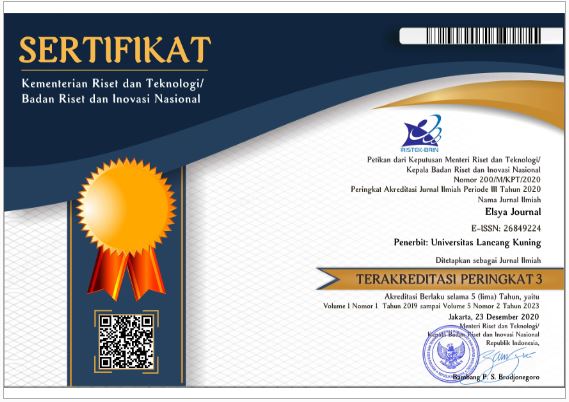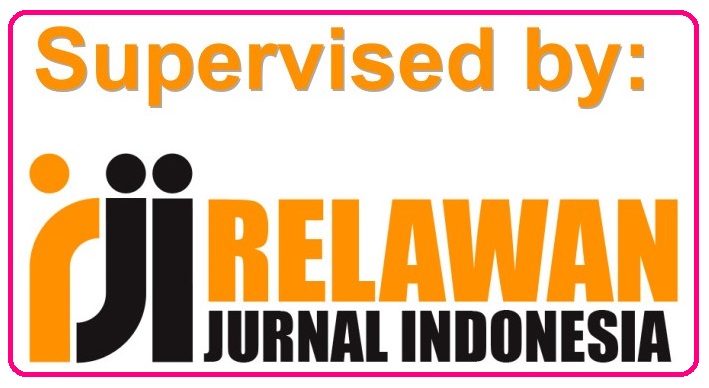Vlogging as an Assessment Tool in ELT: A Study Among Adult Learners in a Distance Learning Programme
Abstract
The study was conducted to address the problem of English language speaking anxiety among adult ESL learners by introducing vlogging as one of the learning activities and as an assessment of speaking skills. The main objective of this action research was to establish whether vlogging assignments could assist in alleviating speaking anxiety among adult learners and in determining whether the students' vlogs posted in the class's Facebook group could be used as part of the course's speaking assessment to replace face-to-face presentation. A qualitative research design was adopted in this study. The study employed purposeful sampling, and the participants chosen came from an intact group of thirty adult learners who enrolled in a distance learning programme at a public university in Malaysia. The study was conducted in the students’ ‘English for Communication’ class over a study period of fourteen weeks. The data was collected at the end of the study period through focused group interviews and analysed using the thematic analysis method, and presented descriptively. It was found that vlogging is effective in increasing the students’ English talk time outside class which consequently contributes to increasing their self-confidence and alleviating speaking anxiety. Thus, it can be concluded that vlogging is effective in lessening language speaking anxiety among the participants and can effectively be used as an assessment tool to reduce test-taking anxiety. Facebook group is also found to be a suitable platform for group interactions as it provides a non-threatening learning environment for the learners. The findings of the study have potential implications for English language teaching among adult learners.
Downloads
References
Ab Latif, N.A. (2015). A Study on English Language Anxiety among Adult Learners in Universiti Teknologi Malaysia (UTM). Procedia - Social and Behavioral Sciences, 208, 223 – 232.
Ab Manan, N.A., Alias, A.A. & Pandian, A. (2012). Utilising a Social Networking Website as an ESL Pedagogical Tool in a Blended Learning Environment: An Exploratory Study. International Journal of Social Sciences and Education, 2(1), 1-9.
Ab Rashid, R., Mohamed, S. B., Rahman, M.F.A.& Shamsuddin, S. N. W.(2017). Developing Speaking Skills Using Virtual Speaking Buddy. iJET , 12(5), 195-201. https://doi.org/10.3991/ijet.v12i05.6955
Akimov, A. & Malin, M. (2020) When old becomes new: a case study of oral examination as an online assessment tool, Assessment & Evaluation in Higher Education, 45:8, 1205-1221, DOI: 10.1080/02602938.2020.1730301
Andini, M. (2019). The Contribution of Facebook Group in Writing Activity. Journal of ELT Research: The Academic Journal of Studies in English Language Teaching and Learning, 4(1), 44-51. https://doi.org/10.22236/JER_Vol4Issue1pp44-51
Anggeraeni, A., Rachmijati, C.& Apriliyanti, D.L.(2020). Vlog: A Tool for Students’ Speaking Practice Enhancement. Research and Innovation in Language Learning, 3(1), 23 – 31. http://jurnal.unswagati.ac.id/index.php/RILL
Anil, B. (2016). Top-Up Students Second Language Talk Time through Vlogs. Indonesian Journal of EFL and Linguistics, 1(2) ,129-143. http://dx.doi.org/10.21462/ijefll.v1i2.9
Arnold, S. D. (2012). Assessing Student Learning Online: Overcoming Reliability Issues. International Conference on Cognition and Exploratory Learning in Digital Age (189-196). IADIS Press.
Badrasawi, K. J., Solihu, A., & Ahmad, T. S. (2020). Second Language Speaking Anxiety Among Malaysian Postgraduate Students at a Faculty of Education. International Journal of Education & Literacy Studies, 8(2), 54–61.
doi: https://doi.org/10.7575/aiac.ijels.v.8n.2p.54
Baran-Lucarz, M. (2014). The link between pronunciation anxiety and willingness to communicate in the foreign-language classroom: The Polish EFL context. The Canadian Modern Language Review, 70, 445-473.
Boonkit, K. (2010). Enhancing the development of speaking skills for non-native speakers of English. Procedia Social and Behavioral Sciences, 2,1305–1309. doi:10.1016/j.sbspro.2010.03.191
Bygate, M. (2009). Teaching the spoken foreign language. In B. Seidlhofer & K. Knapp (Eds.), Teaching the Spoken Foreign Language (pp.401-438). Berlin: Mouton de Gruyter.Clarke, V. & Braun, V. (2013). Teaching thematic analysis: Over-coming challenges and developing strategies for effective learning. The Psychologist, 26(2), 120-123.
Clark, J. S., Porath, S., Thiele, J.&Jobe, M. (2020). Action Research. NPP eBooks. 34. https://newprairiepress.org/ebooks/34
Cresswell, J.W. (2008). Educational Research: Planning, Conducting and Evaluating Quantitative and Qualitative Research: Third Edition. Singapore. Pearson Merrill Prentice Hall.
Cubukcu, F. (2007). Foreign Language Anxiety. Iranian Journal of Language Studies (IJLS), 1(2), 133-142.
Derakhshan, A., Tahery, F. & Mirarab, N. (2015). Helping Adult and Young Learners to Communicate in Speaking Classes with Confidence. Mediterranean Journal of Social Sciences, 6(2), 520-525. Doi:10.5901/mjss.2015.v6n2p520
Earle-Carlin, S., Snow, M. A., Zwier, L. J., & Zimmerman, C. B. (2011). Q: Skills for success. Listening and speaking. Oxford: Oxford University Press.
Fadilah (2016). Teaching Speaking by Role-Play Activity. OKARA Journal of Languages and Literature, 2(10), 209-216.
Gardner, R. C., Tremblay, P. F., & Masgoret, A. -M. (1997). Towards a full model of second language learning: An empirical investigation. Modern Language Journal, 81, iii, 344-362.
Hewitt, E., & Stephenson, J. (2012). Foreign language anxiety and oral exam performance: Application of Phillips’s MLJ Study. The Modern Language Journal, 96, 170–189.
Humphries, R. (2011). Language anxiety in international students. Griffith Working Papers in Pragmatics and Intercultural Communication 4, 1/2, 65‐77.
Kahu, E. R., Stephens, C., Leach, L. & Zepke, N. (2013). The engagement of mature distance students. Higher Education Research & Development, 32(5), 791–804.
Kementerian Pendidikan Malaysia (2014). Dasar Memartabatkan Bahasa Malaysia Memperkukuh Bahasa Inggeris (MBMMBI) https://www.moe.gov.my/dasar/1198-dasar-memartabatkan-bahasa-malaysia-memperkukuh-bahasa-inggeris-mbmmbi/file
Kapur, S. (2015). Understanding the Characteristics of an Adult Learner. Jamia Journal of Education- An International Biannual Publication, 2(1), 111-121.
Li, W.(2011).Validity Considerations in Designing an Oral Test. Journal of Language Teaching and Research, 2(1), 267-269. doi:10.4304/jltr.2.1.267-269
Mabuan, R.A. & Ebron, G. P. (2016). Engaging ESL/EFL Learners with Facebook Groups. 24th Annual Korea TESOL International Conference At: Sookmyung Women's University, Seoul, South Korea.
Madzlan, N.A., Goh, H.S. & Kesevan, H.V. (2020). Use of Video Blogs in Alleviating Public Speaking Anxiety among ESL Learners. Journal of Education and e-Learning Research, 7(1), 93-99. DOI: 10.20448/journal.509.2020.71.93.99
Mandasari,B. & Aminatun, D. (2020). Improving Students’ Speaking Performance Through Vlog. Journal of English Teaching and Research, 5(2), 136-142.
Ministry of higher education. (2011). Blueprint on enculturation of lifelong learning for Malaysia 2011-2020. Retrieved from : https://uil.unesco.org/document/malaysia-blueprint-enculturation-lifelong-learning-malaysia-2020-issued-2011
Mohammed, F.O., Zebari, I.A., Malo, S.S. & Othman, H.G. (2020). The Effect of Increasing Student Talking Time on University EFL Students’ Comprehension of Pragmatic Concepts. Asian EFL Journal Research Articles, 27(3), 5-23. http://www.asian-efl-journal.com
Nasir, N.F.W.M., Ab Manan, N.A., Ab Rahim, P.R.M.A. & Azizan, N.(2020). A Study on Student Readiness of Online Learning Among Adult Distance Learners. ESLA International Journal for educational Sciences and Language Arts,1(2), 31-41.
https: eslauitmperak.wixsite.com/esla
Nassaji, H. (2015). Qualitative and descriptive research: Data type versus data analysis. Language Teaching Research, 19(2), 129–132.
doi: 10.1177/1362168815572747
Ockey, G. J., Timpe-Laughlin, V., Davis, L., & Gu, L. (2019). Exploring the potential of a video-mediated interactive speaking assessment (Research Report No. RR-19-05). Princeton, NJ: Educational Testing Service. https://doi.org/10.1002/ets2.12240
O’Malley, J. M. & Valdez, P. L. (1996). Authentic assessment for English language learners: Practical approaches for teachers. New York: Addison-Wesley.
Ong, W.N., Swanto, S. & Alsaqqaf, A. (2020). Engaging in reflective practice via vlogs: Experience of Malaysian ESL pre-service teachers. Indonesian Journal of Applied Linguistics, 9 (3), 715-723.
Pasaribu, T. A. & Harendita, M. E. (2018). English language anxiety of pre-service teachers: Causes and coping strategies. LLT Journal: A Journal on Language and Language Teaching, 21(2), 134-147.
Rusli, R., Yunus, M. M., & Hashim, H. (Eds.). (2018). Low Speaking Proficiency Among the Malaysian Undergraduates: Why and How? Retrieved from http://conference.kuis.edu.my/pasak3/images/eprosiding1/PASAK3_2220.pdf
Sabbah, S.S. (2018). Anxiety In Learning English as A Second Language at a Tertiary Stage: Causes and Solutions. European Journal of English Language and Literature Studies, 6(1), 14-33. www.eajournals.org
Saed, H. A, Haider, A. S., Al-Salman, S. & Hussein, R.F. (2021). The use of YouTube in developing the speaking skills of Jordanian EFL university students. Heliyon, 7, 1-6. https://doi.org/10.1016/j.heliyon.2021.e07543
Sahari, S.H., Johari, A. & Morni, A (2016). Language Anxiety Among Adult Learners in UiTM Sarawak. European Journal of Language and Literature Studies, 2(3),105-110.
Saleh, N.S. & Murtaza, S.F. (2018). English Language Use in Malaysian Government and Private Civil Engineering Workplaces. International Journal of Education and Literacy Studies 6(3):84-91. DOI:10.7575/aiac.ijels.v.6n.3p.84
Saint-Leger, D. (2009). Self-assessment of speaking skills and participation in a foreign language class. Foreign Language Annals, 42(1), 158–78.
Samaranayake, S. W. (2016). Oral competency of ESL/EFL learners in Sri Lankan rural school context. SAGE Open, 6(2), 1-10. doi:10.1177/2158244016654202
Saputro, T.H., Tafsirudin, I.C.& Farah, R. R. (2020). The Use of Vlog in Improving Students’ Oral Language Production: A Case Study. English Education: Jurnal Tadris Bahasa Inggris,13(1), 135-158. https://ejournal.radenintan.ac.id/index.php/ENGEDU
Sari, P. (2017).Using Vlog in the YouTube Channel as a Means To Improve Students’ Motivation And Confidence to Speak English in Intermediate 1 Level of LB-LIA Jambi. International Journal of English Language and Teaching, 1(1), 38-44. https://online-journal.unja.ac.id/index.php/IJoLTE
Savaşçı, M. (2014). Why are some students reluctant to use L2 in EFL speaking classes? An action research at tertiary level. Procedia - Social and Behavioral Sciences, 116, 2682 – 2686.
Taqwa, A. & Sandi, V. N. (2019). Students’ Experiences of Using Vlogs to Learn English. Journal of Foreign Language Teaching & Learning, 4(1), 1-13.
DOI: 10.18196/ftl.4134
Upadhyay,S. & Upadhyay, N.(2020). Incorporating Twitter for Second Language Acquisition: Framework and Evidence. Asian EFL Journal Research Articles, 27(3), 387-398.
Vlog. (2021). In Cambridge Business English Dictionary. Cambridge University Press. https://dictionary.cambridge.org/dictionary/english/vlog
Watkins, J. (2012). Increasing student talk time through vlogging. Language Education in Asia, 3(2), 196-203. DOI:10.5746/LEiA/12/V3/I2/A08/Watkins
Wulandari, M. (2019). Improving EFL Learners’ Speaking Proficiency Through Instagram Vlog. LLT Journal: A Journal on Language and Language Teaching, 22(1), 111-125.http://e-journal.usd.ac.id/index.php/LLT
Zheng and Cheng. (2018). How does anxiety influence language performance? From the perspectives of foreign language classroom anxiety and cognitive test anxiety. Language Testing in Asia, 8(13), 1-19. https://doi.org/10.1186/s40468-018-0065-4
Zhang, L. J., & Rahimi, M. (2014). EFL learner’s anxiety level and their beliefs about corrective feedback in oral communication classes. System, 42, 429–4.
- Author retains the copyright and grants Elsya Journal the right of first publication of the work simultaneously licensed under the Creative Commons Attribution-ShareAlike 4.0 License that allows others to share the work with an acknowledgment of the work's authorship and initial publication in this journal
- The author is able to enter into separate, additional contractual arrangements for the non-exclusive distribution of the journal's published version of the work (e.g., post it to an institutional repository or publish it in a book) with the acknowledgment of its initial publication in this journal.
- The author is permitted and encouraged to post his/her work online (e.g., in institutional repositories or on their website) prior to and during the submission process, as it can lead to productive exchanges, as well as earlier and greater citation of the published work (See The Effect of Open Access).









 Elsya Journal is licensed under
Elsya Journal is licensed under 